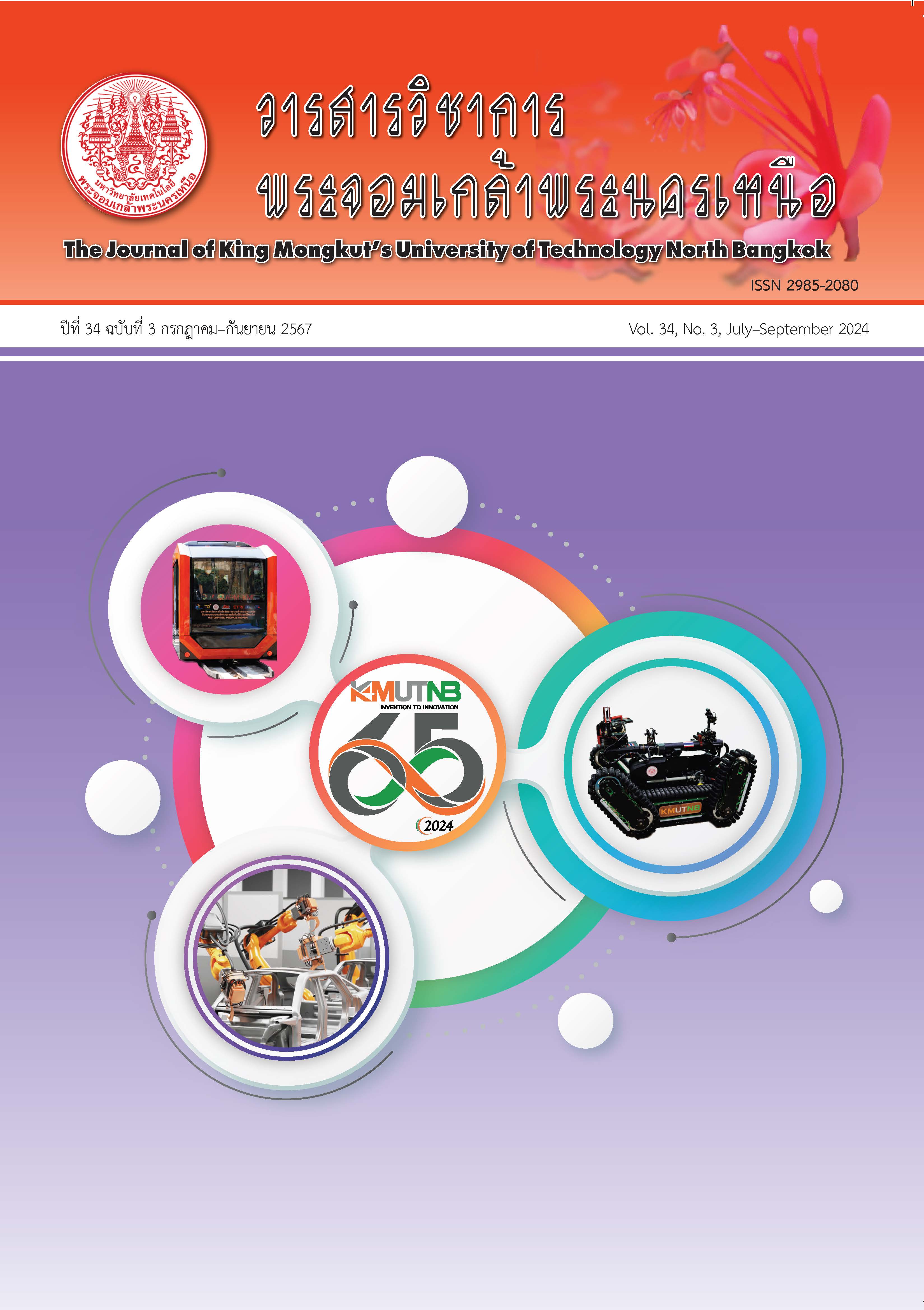Improving Efficiency in the Random Sampling Process: A Case Study of Pouch Products at Raw Material Receiving and Warehouse
Main Article Content
Abstract
The objective of this work was to improve efficiency in the random sampling process of pouch products by applying the MIL-STD-105E and switching rules in process improvement. DMAIC, which is the 5 steps of Six-sigma, was applied. In the Define (D) phase, in 2020 it was found that the average sampling sizes of pouch products were 7,438 bags/month and 110,641 bags/month at the raw material receiving and warehouse departments. These records were higher than the target goal of the company, resulting in a lost sales value of approximately 22,459.40 Baht/month. In Measure (M) phase, 3 main problems in the sampling procedure were observed, namely, not systematic working culture, no sampling plan standard, and too many random sample sizes. Therefore, the root cause analysis in Analyze (A) phase was analyzed by using the design of the experiment in combination with ECRS, MIL-STD-105E, and switching rules. Those root cause factors were then experimented and the optimum condition was used in a further step. In Improve (I) phase, it was found that the average sampling sizes of pouch products were reduced to 5,147 bags/month and 48,425 bags/month at the raw material receiving and warehouse departments resulting in the advantage of the sales value of production approximately 6,562.92 baht/month. Consequently, this could be able to reduce the number of employees by 2 people. In addition, in terms of Control (C) phase, the process of creating a system for sustainable control was conducted and shared with employees by One Point Lesson (OPL).
Article Details

This work is licensed under a Creative Commons Attribution-NonCommercial-NoDerivatives 4.0 International License.
The articles published are the opinion of the author only. The author is responsible for any legal consequences. That may arise from that article.
References
L. G. Eugene and S. L. Richard, Statistical quality control. 7th ed, USA: McGraw-Hill Inc., 1999.
J. M. Juran and F. M. Grayna, Quality planning and analysis. 3rd ed, USA: McGraw-Hill Inc. 1993.
B. Wongtong, “An improvement of material incoming inspection sampling plan a case study: An incoming inspection of dice material for an electronics industry,” M.S. thesis, Department of Electrical Engineering, Faculty of Engineering, Rajamangala University Technology Thanyaburi, 2009 (in Thai).
C. Wongaphai, P. Kittisuntronwong, and J. Chotyaku, “Waste reduction in production process: The case study of Fresh-Cut vegetables factory,” presented at the National Conference of Si Ayutthaya Rajabhat Group 2016 (NCSAG-2016), Bangkok, Thailand, Jul. 7–8, 2016 (in Thai).
R. Karout and A. Awasthi, “Improving software quality using Six Sigma DMAIC-based approach: A case study,” Business Process Management Journal, vol. 23, no. 4, pp. 842–856, 2017.
V. Pukpasuk and A. Kengpol, “Defect reduction in chromium plating process by applying six sigma solution: A case study of a chromium plating factory,” The Journal of KMUTNB, vol. 18, no. 2, pp. 33–42, 2008 (in Thai).
C. Jantarach and R. Chompuinvai, “Efficiency improvement of incoming material inspection process in air catering equipment manufacturing company,” presented at the seminar conference of industrial engineering and industrial management, Chiangmai, Thailand, Mar. 7–8, 2017 (in Thai).
J. J. Mohammad and J. M. Sayed, “Improved attribute acceptance sampling plans based on maxima nomination sampling,” Journal of Statistical Planning and Inference, vol. 140, no. 9, pp. 2448–2460, 2010.
V. Pongpornsap, “The standard of MIL-STD-105E (Chapter. 1),” Production for Quality, vol. 16, no. 150, 33–36, 2010 (in Thai).
V. Pongpornsap, “The standard of MIL-STD- 105E (Chapter. 3),” Production for Quality, vol. 17, no. 152, pp. 35–39, 2010 (in Thai).
P. Moonrat and K. Leksakul, “Comparison of acceptance sampling plan for chicken cutting production process and MIL-STD-105E standard,” Engineering Journal Chiang Mai University, vol. 19, no. 2, pp. 13–22, 2012 (in Thai).
P. Moonrat, “Design of acceptance sampling plan and production control chart in chicken cutting process,” M.S. thesis, Department of Industrial Engineering, Faculty of Engineering, Chiangmai University, 2012 (in Thai).
W. Albers, C. M. W. Kallenberg and S. Nurdiati, “Data driven choice of control charts,” Journal of Statistical Planning and Inference, vol. 136, no. 3, pp. 909–941, 2006.
P. Poolperm and A. Janpen, “Statistical process control in sweetmeat product process,” Senior project, Department of Management and Logistics Engineering, College of Innovative Engineering, Dhurakit Pundit University, 2017 (in Thai).
Y. C. Huang, C. C. Cheng, and Y. A. Ding, “The comparative study on expected total quality cost between traditional single sampling plan and economical design,” International Journal for Quality Research, vol. 13, no. 1, pp. 221–234, 2018.

